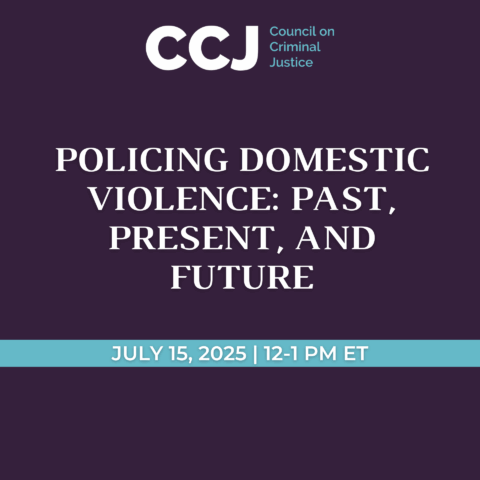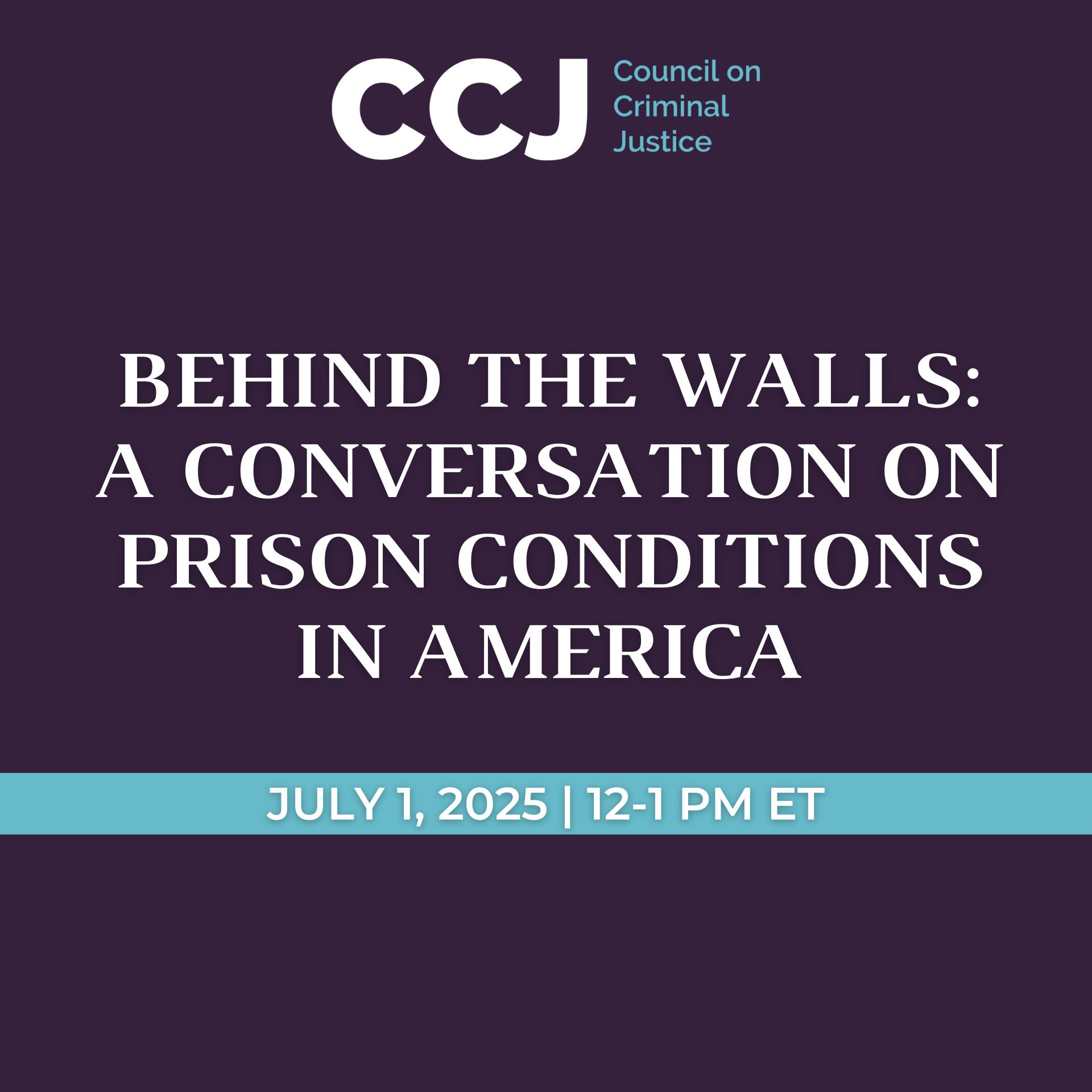Disparities in female prison populations declined substantially, largely driven by a 138% increase in prison admissions for White women from 2000 to 2019.
5:00 a.m. ET, April 11, 2024
Contact: Jenifer Warren
jwarren@counciloncj.org
916-217-0780
Washington, D.C. – The Black-White disparity in imprisonment has narrowed substantially over the past 20 years but very little of the progress can be attributed to state sentencing reforms, according to a series of reports released today by the Council on Criminal Justice (CCJ).
Following on previous analyses that documented a 40% drop in the Black-White imprisonment disparity between 2000 and 2020, researchers at CCJ, Georgia State University, and the Crime and Justice Institute examined more than 700 statutes adopted in 12 states between 2010 and 2020, seeking to understand how sentencing reforms might have influenced the reduction. Laws included for study related to violent, property, and drug crimes, as well as parole release and technical violation practices. The study states (Arizona, California, Colorado, Florida, Georgia, Illinois, New York, North Dakota, Pennsylvania, South Carolina, Texas, and Utah) varied by region, demographic composition, sentencing structure, and the political party in power.
With minor exceptions, the analysis found that the sentencing reforms had negligible impacts on reducing racial disparities, and instead largely codified changes to enforcement, policing, charging, and sentencing practices that had occurred before the laws were enacted. In addition, many sentencing law changes that took effect during the study period addressed fairly infrequent crimes and therefore had a minimal effect on disparity.
The findings suggest that factors beyond sentencing laws were mostly responsible for the Black-White imprisonment disparity declining from 8.2-to-1 in 2000 to 4.9-to-1 in 2020. Though the study did not statistically assess alternative explanations, the authors offered several other possible reasons for the shrinking disparity, including changes in policing practices, drug use (from cocaine to opioids), how drugs are sold (from open-air markets to the use of GPS-equipped smartphones), and the types of crimes people commit (from burglary to cybercrime, for example).
“Troubling racial disparities persist in our criminal justice system, but the narrowing we’ve seen since the turn of the century is encouraging,” said CCJ President and CEO Adam Gelb. “These new findings shed critical light on the path forward, showing us that we need to look beyond sentencing to identify the policy levers that can promote fairness and equity.”
The analysis found that among crime types, racial disparity in imprisonment for violent offenses saw the smallest reduction between 2000 and 2020. Because two-thirds of incarcerated people are serving time for violent crimes, further progress on disparities requires deploying evidence-based strategies to reduce violence in Black communities and addressing differences in the prison time Black and White people serve for similar offenses, said report co-author Thaddeus Johnson, a Georgia State University criminologist and CCJ Senior Fellow.
“We must confront the role of criminal history in sentencing and release policies, because Black people tend to have disproportionate contact with the justice system,” Johnson said. “The reality is that unless we address historic and structural inequities in Black communities and grapple with the length of prison terms for serious violent crime, disparities will persist.”
The 12-state analysis is part of a sweeping package on racial disparities released by CCJ’s Pushing Toward Parity project. It includes an in-depth look at the legislative changes in each of the 12 study states as well as two reports examining disparities in imprisonment through other lenses.
One analysis examined state imprisonment disparities between Hispanic and non-Hispanic White people. It found that disparity in imprisonment rates declined during the first two decades of the century, but that the precise size of the drop is unclear because of a conflict between data sources. In 2020, data collected from state corrections departments showed a Hispanic-White disparity ratio of 1.5-to-1; data from a federal prison survey, however, produced a ratio that was 2.7-to-1, or 80% larger.
The gap in disparity ratios derived from each source has increased over time. In 2000, the two disparity ratios were roughly equivalent, but by 2020 the federal data disparity ratio was 80% larger. The measurement gap stems from how race and ethnicity are recorded and classified in each source. The choice of measurement method makes a large difference in the projected achievement of parity: if current trends continue, the Hispanic-White disparity measure drawn from state data would reach parity by about 2026, while the measure from federal data would reach parity about 30 years later.
Another analysis focused on disparities in female prison populations. It found that state imprisonment disparity between Black and White women fell by 71% between 2000 and 2020, decreasing from 6.3-to-1 to 1.8-to-1 and exceeding the drop for men. The decline was driven by a 56% decline in the imprisonment rate for Black women and a 57% increase for White women. Hispanic-White female imprisonment rate disparity also fell (by 56%) over the two-decade period, data from state corrections departments showed; it has been at or below parity since 2010 and reached 0.7-to-1 in 2020, meaning that White women were more likely to be imprisoned than Hispanic women.
Female imprisonment disparity fell across violent, property, and drug offense categories, with the largest drop recorded for drug crimes. From 2000 to 2020, Black-White drug offense imprisonment disparity among women dropped from 8 to 0.6, reaching parity in 2016. Hispanic-White drug offense imprisonment disparity fell from 2.4 in 2000 to 0.5 in 2020. Changes in the demographic composition of prison admissions drove the trends. From 2000 to 2019, admissions decreased 47% for Black females, increased 15% for Hispanic females, and rose 138% for White females.
The Pushing Toward Parity project was made possible by support from Arnold Ventures, the Ford Foundation, Microsoft, and Southern Company Foundation, as well as the John D. and Catherine T. MacArthur Foundation, #StartSmall, and other CCJ general operating contributors.
About the Council on Criminal Justice
The Council on Criminal Justice (CCJ) is a nonpartisan invitational membership organization and think tank that advances understanding of the criminal justice policy challenges facing the nation and builds consensus for solutions based on facts, evidence, and fundamental principles of justice.



